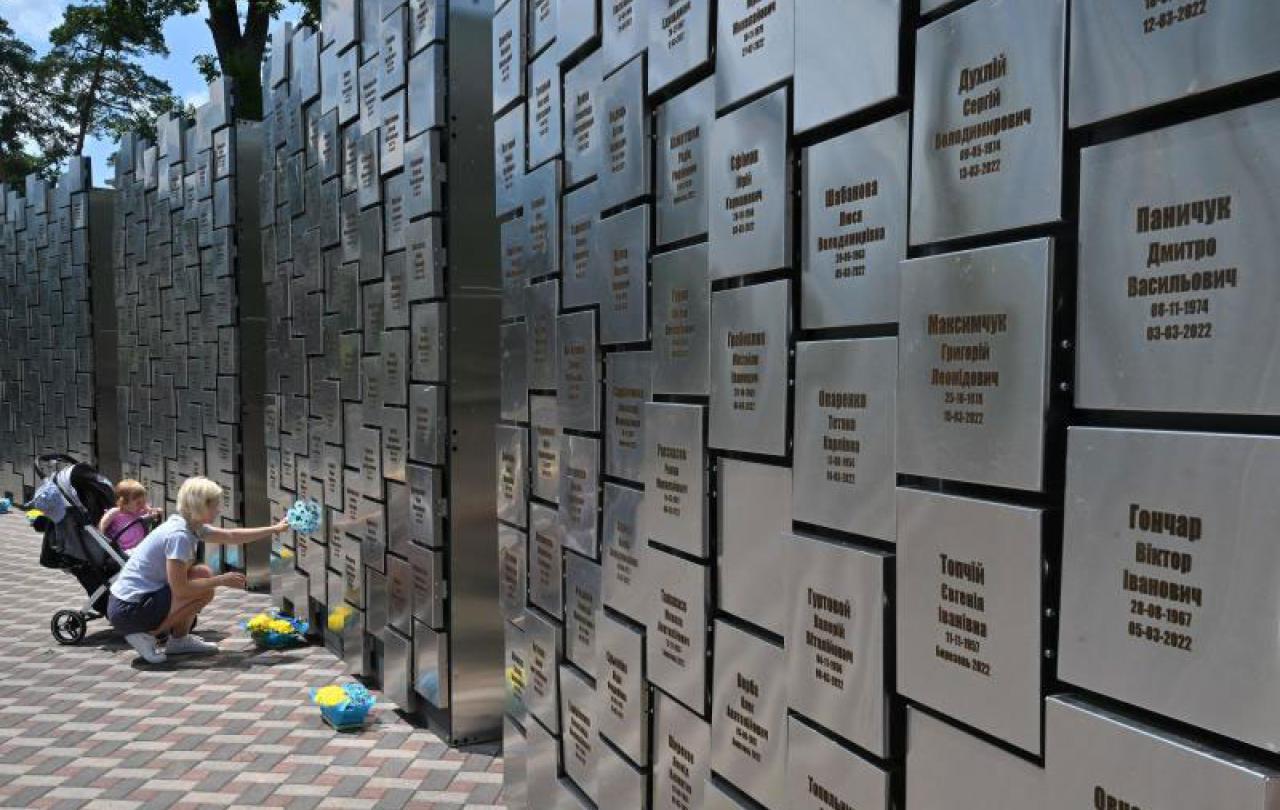
How on earth it came up I have no idea, but I vividly remember chatting with my grandmother about the ‘Phoney War’ of 1939. I can’t have been much older than 10. It’s not that I was especially inquisitive about history, nor that I had the presence of mind to ask for stories from her extraordinary life. How I wish I’d done that with all four of my grandparents. But my hunch is that it was prompted by sitting in the garden on a glorious summer’s day. We were probably shelling peas or peeling potatoes or something—she always got people staying to do jobs.
She was reminiscing about how weird those months in mid-1939 were, in particular remembering how lovely the summer had been, far brighter and drier than normal. Even after the Nazi invasion of Poland on 1st September (thus triggering Britain and France to declare war two days later), the weather remained good. A sense of war’s inevitability had hovered throughout 1939, so even after Chamberlain’s famous ‘final note’ was rejected, nothing much changed. At least, not for ordinary Britons. Life went on. It would take many months before the conflict came all too close to home.
I couldn’t help but think about this during my visit to Kyiv and Lviv earlier this month. The difference, of course, is that there was nothing phoney about Russia’s 2022 invasion or the horrors inflicted on eastern Ukraine since the 2014 annexation of Crimea. But for the majority, routines continued uninterrupted. As they must.
For example, assuming the worst, I had contacted several Ukrainian friends offering to bring any scarce or unavailable items from Britain. No one took me up on it; it was unnecessary, they all said. After wandering through both cities, it was obvious why. Although trade will undoubtedly have been slower than before the war, shops seemed well stocked with all the necessities and not a few luxuries.
Then on my final morning, I was quietly sipping a cappuccino in Lviv’s historic Rynok Square when the air-raid sirens suddenly cranked up into their now familiar whine. Being kept awake by Kyiv’s sirens had been a new experience for me (a mark of our Western privilege that we have avoided all-out war on our soil for decades). But this was my first daytime alert. It was even accompanied by booming Ukrainian announcements, although the advice was inevitably lost on me. As it was on all around me, who seemed assiduously to ignore it. The few mid-morning pedestrians—few tourists come here— maintained their ambling pace unchanged; the taciturn waiter patiently took orders at the next table; a middle-aged businessman on the square continued his negotiations on the phone while gesticulating with his briefcase. So naturally, I kept sipping.
This was not because the sirens cried wolf. Just 10 days before my visit, Lviv had suffered one of the worst air attacks of the war, with 7 killed, over 60 injured, as well as the destruction of schools and historic buildings. Moreover, I met a friend for lunch an hour later who told me that some man-sized drones had attacked his side of Lviv and he saw one or two shot down. So it was all real enough. What was everyone thinking?
Those who keep going amid a siren’s whine are not perhaps ignoring it but taking calculated risks in their perseverance.
Ignoring reality
T. S. Eliot famously observed that "Humankind cannot bear very much reality." So perhaps that was what was going on here. After two and a half years of war, I can quite imagine exhaustion and resignation to what was going on. So it just gets ignored. Ordinary life must go on. After all, only a small proportion of the population is actively engaged in the war; the rest, if they haven’t already left, must try to keep calm and carry on. In fact, men aged between 18-60 are unable to leave at all without the necessary papers and these are hard to come by. Perhaps the only way, then, is to avoid thinking altogether. On a beautiful day, once autumn has begun to temper Ukraine’s oppressive summer heat, sustaining the illusion is simple. Life carries on.
Of course, it can’t last. Every single person I spoke to had family or friends at the front; some had already been killed. The destruction caused by air raids brought a distant conflict onto people’s doorsteps. However, it was driving through the pleasant Kyiv suburbs of Bucha and Irpin, both of which I had previously visited several times, that reinforced the impossibility of ignoring reality. Bucha is now emblematic of the invasions very worst atrocities, from when Russian forces had Kyiv almost entirely surrounded before being pushed east. Locals were rounded up and slaughtered, with the bodies of several hundred civilians later found to have died from bullet wounds rather than shrapnel. But as we drove through, it was impossible to conceive of those horrors. Apart from anything, the weather was so lovely. Atrocities don’t occur on beautiful days… or in lovely places… surely?
Persevering amid reality
What impressed me most in those areas was the speed of the rebuilding work. Entire shopping malls and neighbourhoods had been razed. But after only twelve months or so, a memorial to Bucha’s 500 dead had already been erected. As we drove through, major construction projects were underway, with multiple cranes towering over rapidly rising apartment blocks and retail parks.
These are not signs of reality ignored but faced. These are signs of gritted hope. So it struck me that those who keep going amid a siren’s whine are not perhaps ignoring it but taking calculated risks in their perseverance. Just as it is unwise, if not impossible, to live on a permanent adrenaline rush, so one cannot always exist in flight or fight mode indefinitely. It is simply that in wartime, risk thresholds change. Human beings are resilient and adaptable. They endure the most extraordinary setbacks and conditions.
So, to be with Ukrainian friends in my limited, deficient expression of solidarity, has been inspiring. No one I met had any illusions about the realities of Ukraine’s current plight (especially with a harsh winter looming as Russia systematically destroys power stations). But still they persevere.
Seeking deeper perspectives of reality
However, Eliot did not primarily refer to bearing the reality of the mundane. As the novelist Jeanette Winterson explained, Eliot was identifying how little twentieth century society (that of his Waste Land in particular) could bear of spiritual reality. He meant the phenomenon of resistance to a journey towards God or of facing themselves as they stand before God.
However, the horrors of invasion and the nightly anxieties of air raids have put paid to all that. One friend I was glad to see again is Andriy, previously a fairly well-known Ukrainian journalist and now a church pastor. He regularly goes to the frontline as an unofficial chaplain, visiting troops in their camps and the injured in hospital. He was unequivocal. Before the war they would undoubtedly have been shrugged off. But now, he has not met a single soldier who is uninterested in the things of God and eternity. War has forced them to face their mortality and Andriy has found that most are desperate to talk about little else. These things matter. Even on a beautiful, bright, early autumnal day.





